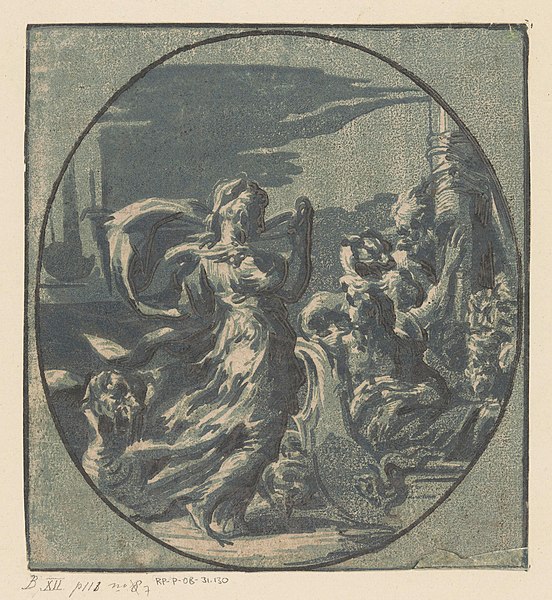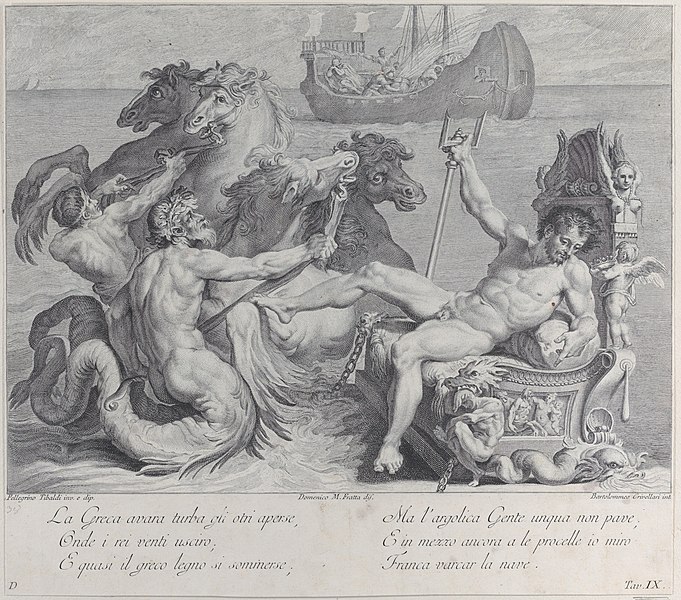Aeaea, a name that resonates with allure and enigma, is an island deeply entrenched in the annals of Greek mythology. Often described as a realm where the boundaries between the mortal and the divine blur, Aeaea is best known as the sanctuary of the beguiling sorceress Circe, The Enchantress of Aeaea. As tales of her magic and the island’s enchantments spread across the ancient world, Aeaea became synonymous with both wonder and peril. This island, with its golden beaches and dense forests, is not just a geographical entity but a symbol of transformation, challenges, and the eternal dance between man and myth.
The allure of Aeaea is not merely due to its enchantress but also its portrayal in ancient texts. As one navigates through the verses of Homer’s “Odyssey,” the island emerges as a pivotal juncture in Odysseus’s tumultuous journey home. But beyond the hero’s tale, Aeaea stands as a testament to the ancient Greeks’ fascination with the unknown, the magical, and the transformative power of encounters with the divine.

Historical References
The “Odyssey” paints Aeaea as a significant chapter in Odysseus’s journey. Upon reaching its shores, Odysseus and his crew are met with wonders and threats alike, primarily stemming from their encounter with Circe. With her potions, she transformed his men into swine, setting the stage for a series of events that would see Odysseus remain on the island for a year. But the “Odyssey” isn’t the sole mention of Aeaea. Throughout various ancient writings, the island is alluded to, each reference adding another layer to its rich tapestry of myths.
While the “Odyssey” offers the most detailed account of Aeaea, other ancient texts and scholars have touched upon it, further fueling its mystique. The island’s exact geographical location has been a point of contention and speculation for centuries. Some ancient geographers and modern scholars alike have tried to pinpoint its location, drawing from textual hints and maritime routes of the time. Yet, despite these efforts, Aeaea’s precise location remains one of antiquity’s unsolved mysteries.
Geographical Speculations
Ancient descriptions often depict Aeaea as a realm of contrasts. Its tranquil meadows, where herbs and flowers with magical properties grow, stand in stark contrast to its dense forests, echoing with the calls of transformed creatures. Overlooking the sea, high cliffs offer a vantage point, perhaps where Circe observed approaching ships, readying her enchantments. While some theories suggest Aeaea’s location south of Aethalia (modern-day Elba), others propose it might lie closer to the Black Sea, possibly near ancient Colchis.
The quest to locate Aeaea has persisted through the ages. Some modern theories, backed by geographical and textual analyses, suggest Mount Circeo on Cape Circeo as a potential location. Surrounded by marshes and bearing a topographical resemblance to ancient descriptions, this site has become a focal point for enthusiasts and scholars. However, the true location of Aeaea, much like the island’s mysteries, remains elusive, adding to its allure and enigma.
Circe’s Abode and Her Enchantments
At the heart of Aeaea’s legends stands Circe’s stone mansion, a place echoing with whispers of ancient spells and enchantments. This abode, nestled amidst the island’s dense woods, was where Circe practiced her craft, brewing potions and casting spells that could bend the will of gods and men alike. The island’s very essence seems intertwined with her magic, making it a place of wonder and danger in equal measure.
Odysseus’s encounter with Circe is perhaps the most iconic tale associated with Aeaea. Using her potions, Circe transformed his crew into swine, showcasing her formidable powers. However, with divine intervention and his wit, Odysseus managed to thwart her plans, leading to a truce and his prolonged stay on the island. This tale, among others, underscores Aeaea’s dual nature: a paradise where time stands still, and a realm where one misstep can lead to eternal enchantment.
Aeaea’s Cultural Impact
The tales of Aeaea and Circe have left an indelible mark on art, literature, and cultural narratives. From Renaissance paintings capturing the pivotal moment of Odysseus confronting Circe to modern novels reimagining the sorceress’s life, Aeaea’s influence spans centuries and mediums. The island, with its enchantments and challenges, serves as a metaphor for transformation, introspection, and the human quest for understanding the unknown.
Beyond visual and literary arts, Aeaea’s legends have influenced theater, music, and even philosophical discourses. The island, with its enchantress and her spells, poses questions about human nature, free will, and the interplay between mortals and the divine. As a cultural symbol, Aeaea stands as a testament to humanity’s age-old fascination with magic, mystery, and the transformative power of encounters with the otherworldly.

The Connection to Colchis
Aeaea’s tales are intricately linked to another legendary realm: Colchis, The Enchanted Land of the Golden Fleece. Circe’s lineage traces back to this land, known for the Golden Fleece and another famed sorceress, Medea, The Enchantress. The similarities between the two regions, both steeped in magic and mystery, have led some to speculate on their proximity or even suggest that they might be descriptions of the same place.
The shared legacy of magic, divine encounters, and transformative tales between Aeaea and Colchis is undeniable. Both realms serve as pivotal junctures in hero’s journeys. They are places where mortals come face-to-face with challenges that test their mettle, wit, and character. The intertwining tales of these two regions, their enchantresses, and their enchantments add depth to the tapestry of Greek mythology.
Modern Exploration and Tourism
In the modern era, the legends of Aeaea beckon travelers, historians, and mythology enthusiasts. The island’s exact location remains a mystery. However, places like Mount Circeo have become pilgrimage sites for those eager to experience a slice of this ancient enigma. The “Grotta della Maga Circe” on Mount Circeo, in particular, has become a focal point for modern explorations.
Though direct archaeological evidence linking these sites to the ancient tales is scant, the aura of Aeaea is palpable. The landscapes, the whispers of ancient tales carried by the winds, and the very essence of these places make them a must-visit for anyone enthralled by the legends of Circe and her island. Tourism initiatives, blending history, myth, and natural beauty, are allowing visitors to step into the world of the ancient Greeks.
From Ancient Texts
Homer’s “Odyssey” offers one of the most evocative descriptions of Aeaea and its enchantress:
“…we came to the isle of Aeaea, where dwelt fair-tressed Circe, a dread goddess of human speech, sister to Aeetes of baneful mind; and both were begotten by Helios, the sun god, who gives light to mortals, and their mother was Perse, daughter of Oceanus.”
This passage, captures the essence of Aeaea, its allure, challenges, and its place in the pantheon of Greek myths. It serves as a reminder of the island’s timeless charm and its pivotal role in the epic tales of heroes, gods, and the interplay between mortals and the divine.
Frequently Asked Questions
The exact location of Aeaea remains a topic of debate among scholars. Some theories suggest it might be near the Tyrrhenian shore. However, others believe it could be closer to the Black Sea, possibly near ancient Colchis.
There are no direct archaeological evidence confirming Aeaea’s existence. However, places like Mount Circeo is believed by some to be the island’s potential location. As such, they have become focal points for historical and archaeological explorations.
Aeaea stands as a symbol of transformation, challenges, and the intertwining of mortal and divine realms. Its tales, particularly those involving Circe and Odysseus, offer insights into human nature, the challenges of hero’s journeys, and the ancient Greeks’ understanding of the unknown and the magical.
Featured Image Credit: Rijksmuseum, Public domain, via Wikimedia Commons
